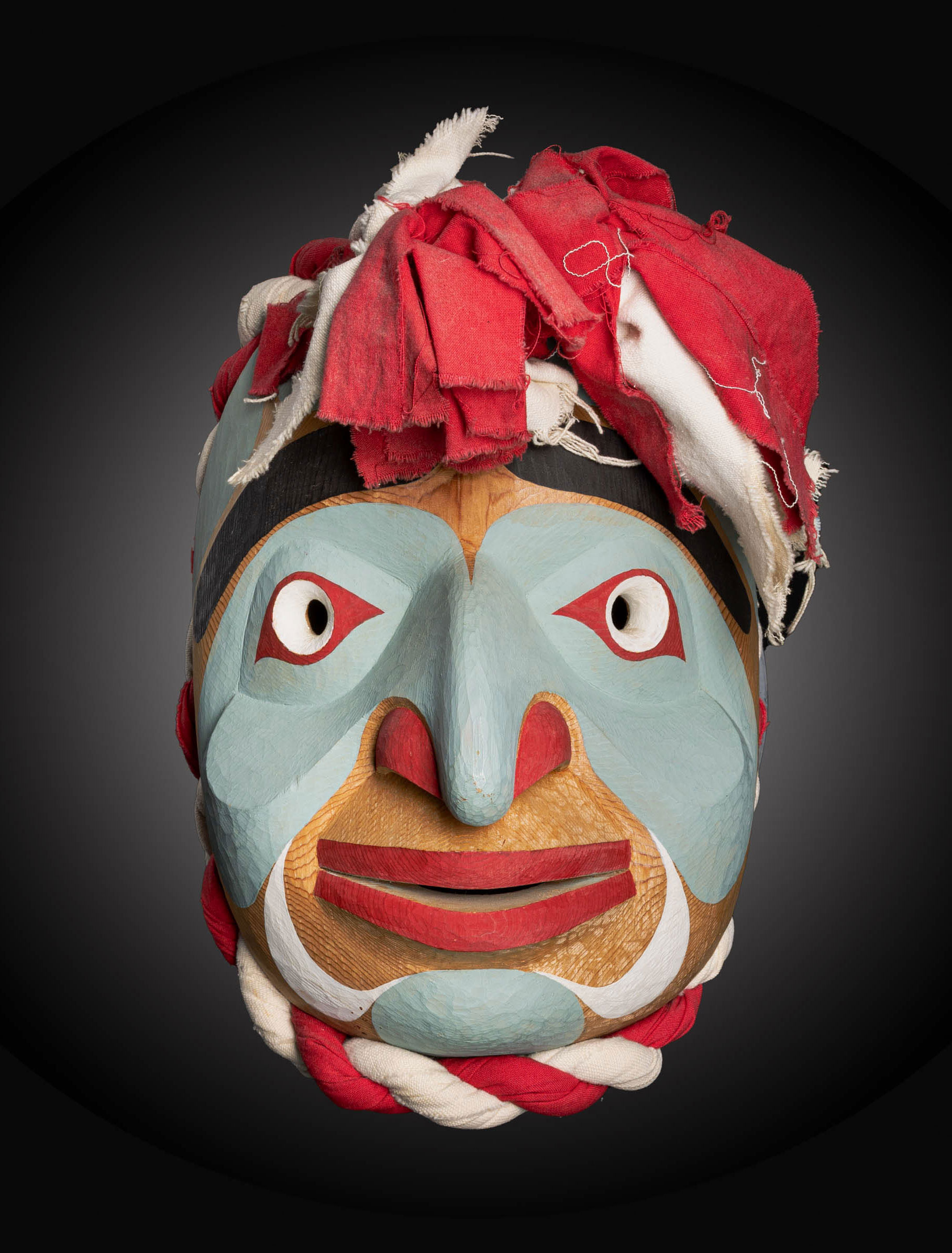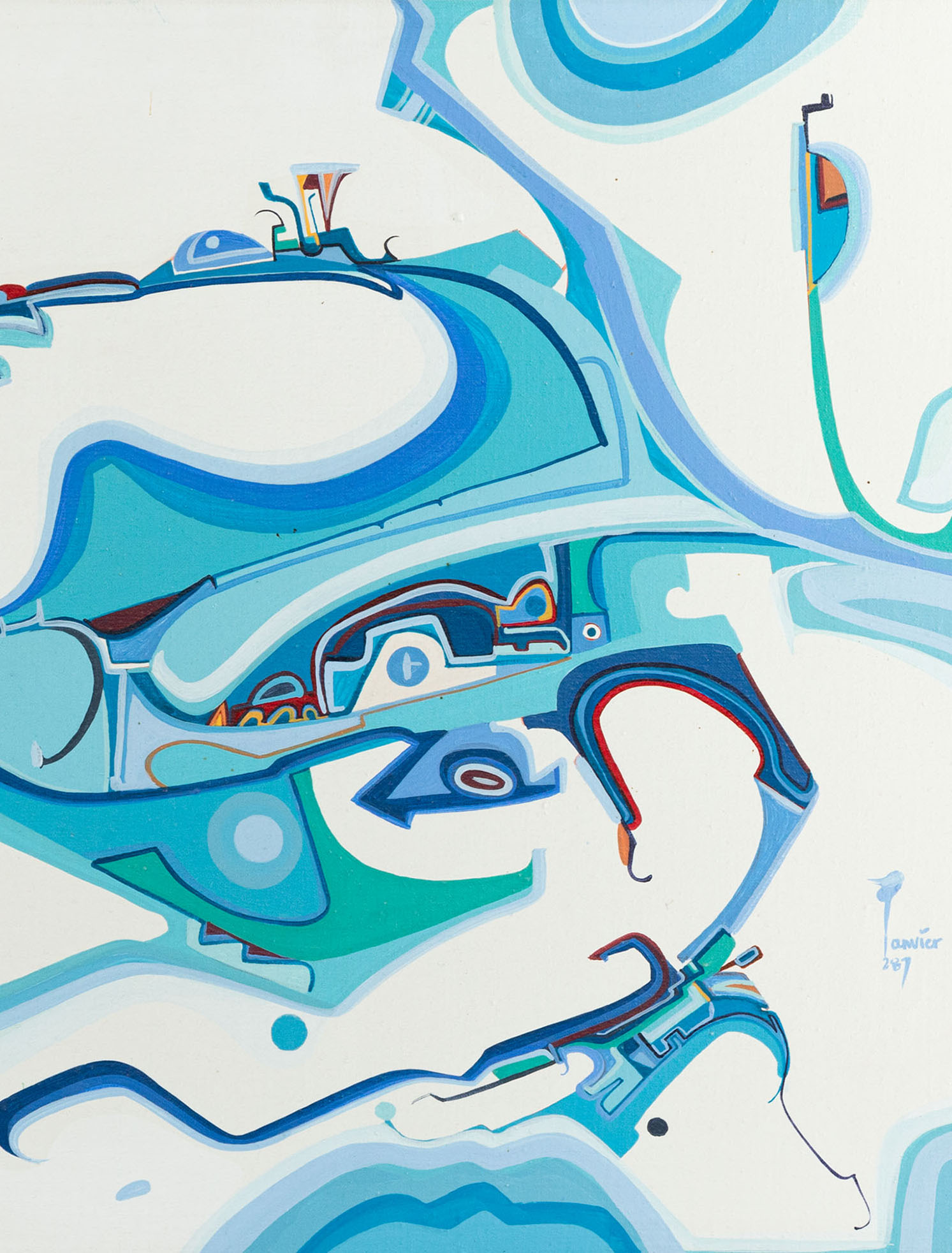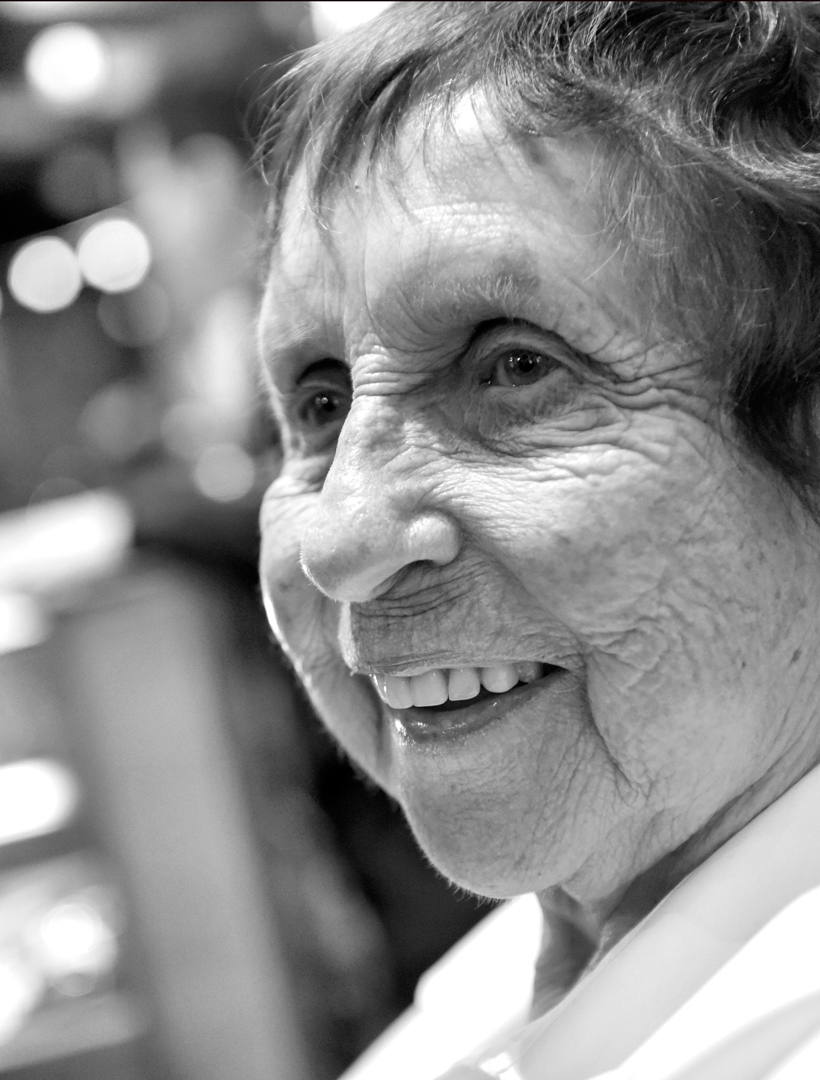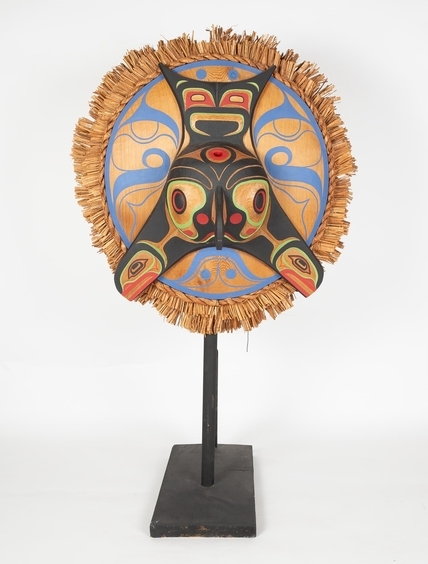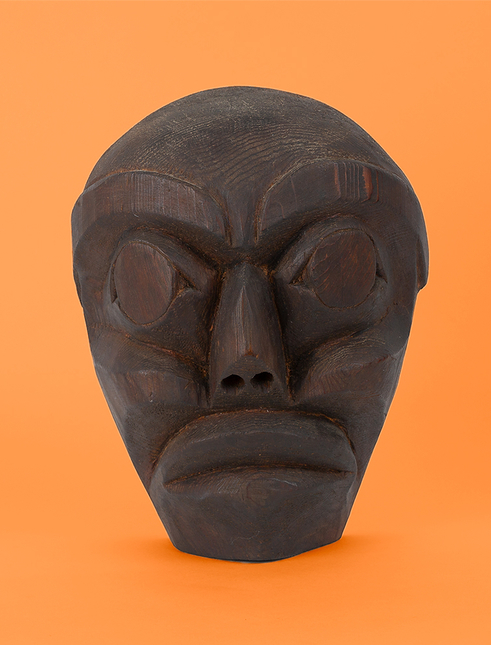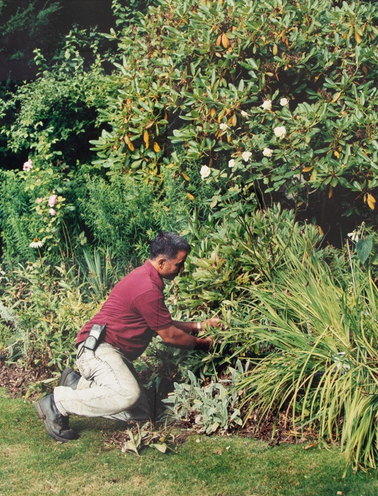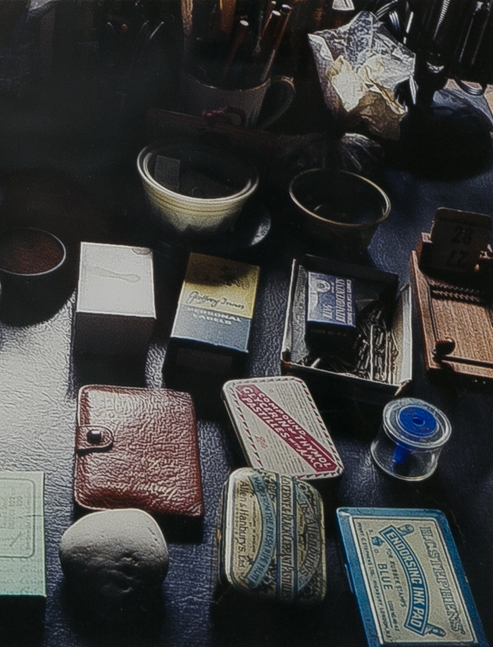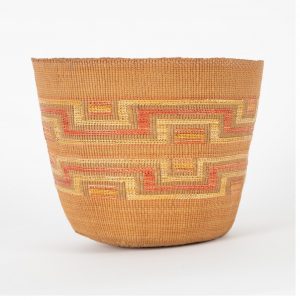
A FINE SPRUCE ROOT BASKET WITH COMPLEX KEYSTONE WEAVING, LATE 19TH/EARLY 20TH CENTURY
spruce root
Estimate $1,500-$2,000
Down from Alaska, along Canada’s Western Coast and all the way to Oregon, the art of basket weaving has been in practice for thousands of years, representing the fusion of utilitarianism and aesthetics. Used for gathering, storage, transportation, cooking and ceremonial purposes, the baskets woven by Indigenous people along the Northwest Pacific coast tell the unique story of the people who wove them.
SOURCED FROM NATURE
Materials used include grass, bark, roots, cattails, and various reeds, which would be chosen based on the type of basket being made. Baskets made to haul heavy loads would be constructed out of sturdier bark and roots, while lighter or more decorative items could be made from finer grasses. Some baskets were designed almost like a backpack or a purse to keeping the wearer’s hands free, while other baskets were kept soft and flexible for easy storage when not in use. Before the use of metal pots, baskets were even used for cooking. Woven water-tight, these vessels would be filled with liquid into which red-hot rocks heated by the fire were placed. Other baskets were woven much looser, designed to act like a sieve to aid in clam and shellfish harvesting, or as steamer baskets.
A plethora of natural materials available along the Northwest Coast allowed weavers the choice of many different textures and colours, which were used to great artistic effect. A variety of natural dyes have also been used, which were augmented by the artificial pigments introduced in the late 1860s by European traders.
Harvesting and gathering materials for weaving is a highly specialized act as fibres must be collected when they are best suited to their purposes. Cut too early, certain grasses will be too soft or narrow. Picked too late, fibres might be too brittle. Spring and early summer are usually the best time to harvest. Much of the tree barks used are typically harvested when the sap is running between April and July, the moving sap allowing the bark to be stripped easily. Sustainability is kept at the forefront, and artists will only take a few strips of bark or roots from a tree, careful not to harm the organism.
Once gathered, materials are often washed, dried and bundled—whatever is not used immediately will be processed and kept for future use. If stored properly, certain materials can last for years. Once the artist is ready to weave, fibres will be soaked in water to render them more pliable. Water is key in basketry, as materials are constantly being moistened to encourage their flexibility.
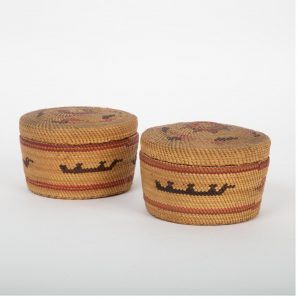
TWO EARLY/MID 20TH CENTURY NOOTKA/MAKAH WOVEN BASKETS
sea grass and cedar bark
2 x 3.5 x 3.5 in — 5.1 x 8.9 x 8.9 cm; 2 x 3.5 x 3.5 in — 5.1 x 8.9 x 8.9 cm
Estimate $300-$500
BEAUTY AND FUNCTION BY DESIGN
Northwest Coast weavers typically employ three main techniques and variations based upon them: coiling, plaiting and twining. The Burke Museum in Seattle, Washington provides a detailed breakdown of each technique, which will interest those intrigued by the more procedural aspects of basketry. Artists are able to modify these techniques to create changes in the weave’s appearance and texture. The addition of painted motifs to finished baskets is also common.
The designs employed by Indigenous weavers are often ritualized and specific to group and place, reflecting cultural beliefs. Individual artists would express their own personal styles but, as noted by Christy Christodoulides, “within an established vocabulary of aesthetics and design elements regulated by her people’s vernacular weaving style.” Forms were also borrowed and adapted due to intermarriage.
Garments, mats, cradles and furnishings are also important parts of Indigenous basketry. Rain capes, hats, aprons and skirts are all made using the same techniques as are used in constructing vessels. Woven clothing is still in evidence at contemporary potlatches, powwows and other ceremonies.
Though seemingly fragile, baskets can survive for long periods, and are passed on through generations. Kristin Converse describes an enormous basket belonging to a Chilkat Tlingit family that is known as Kuhk-claw or “Mother Basket.” Woven in the 1880s, the Kuhk-claw measures approximately three feet in both height and diameter, and was used to hold vast amounts of food. It was displayed with pride at numerous potlatches, and has become a prized heirloom.
ANCIENT TRADITIONS, CONTEMPORARY WEAVERS
The increase in contact with settlers in the late 19th century prompted Indigenous weavers to focus on producing items for sale that were more aesthetic than functional. Basketry became an important source of income, and many of the pieces held in private and museum collections were commercially produced in this manner. Tourism increased in the 19th and 20th centuries, with visitors looking to buy Indigenous-made crafts directly from the maker. Baskets were seen as an ideal souvenir, and weavers created many new designs and forms during this time. Previously unseen forms such as tea cozies, teacups, trinket baskets and glass bottles wrapped in grass were all produced during this time. New materials such as raffia were introduced, as well as commercial dyes. Sometimes, Western motifs were quite literally transcribed from European textiles and fabrics acquired through trade into woven products.
Basketry continues to thrive today. Traditionally a female-dominated art, contemporary weavers of all genders practice this ancient tradition. Weavers are accorded great respect within their communities, as has been the custom for centuries. Indigenous basketry is no longer seen as an ethnographic specimen or a souvenir, but has entered the realm of fine art. Unfortunately, contemporary weavers must face the decline of certain raw materials due to the destruction of various natural habitats. Logging, pollutants, invasive foreign species and the privatisation of land have all contributed to a decline in plant life and Indigenous access to them.
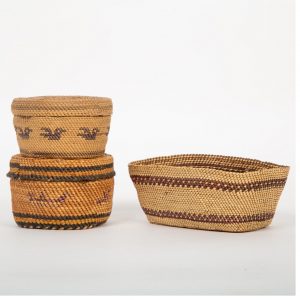
sea grass and cedar bark
2.25 x 5 x 3.5 in — 5.7 x 12.7 x 8.9 cm; 2.5 x 3.5 x 3.5 in — 6.4 x 8.9 x 8.9 cm; 2 x 3.5 x 3.5 in — 5.1 x 8.9 x 8.9 cm
Estimate $400-$600
FIND OUT MORE
We are pleased to present several examples of Northwest Coast basketry, lots 6-9 in our Waddington’s West auction. Based in Vancouver, this auction features a broad range of Canadian art including Northwest Coast and Inuit art, all of which has been sourced from Western Canadian collections. The auction will be online from March 6-11, 2021. We invite you to browse the full catalogue.
Please note that all artworks are located in Vancouver and shipping from Vancouver is the responsibility of the successful bidders.
For more information or condition reports, please contact [email protected]. Please note that this auction closes at 2 pm ET (11 am PT).
Related News
Meet the Specialist

Jacqui de Leeuw
Director
Waddington's Vancouver



